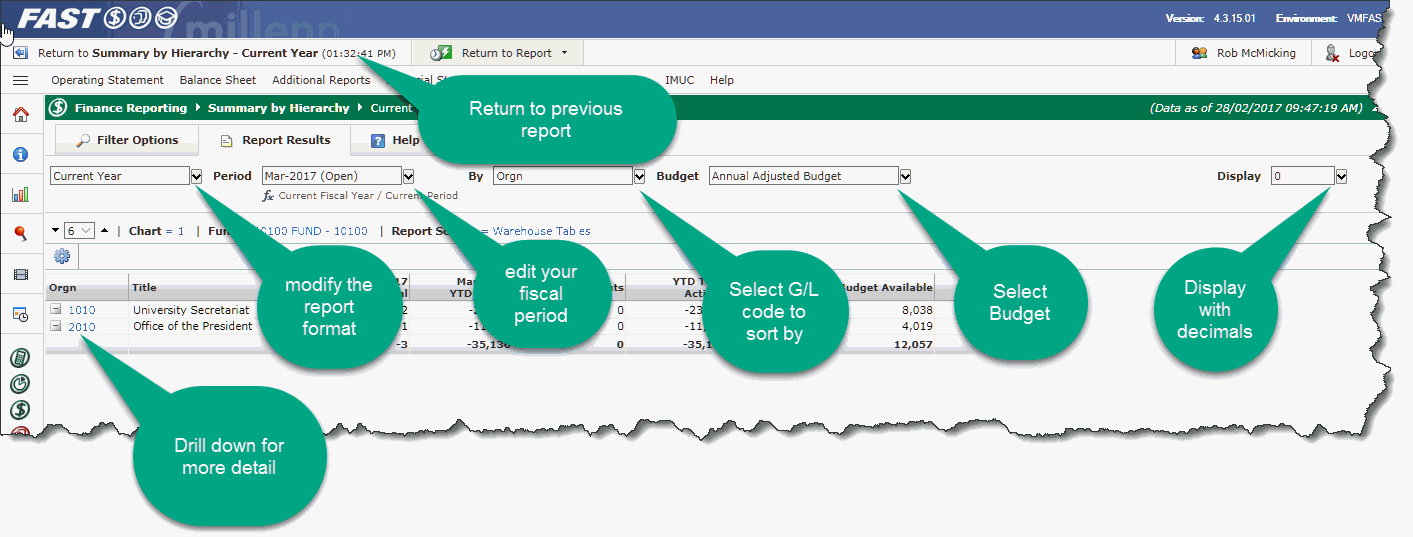|
The Operating Statement is customized for your institution. The information on this page covers all options for the baseline Operating Statement. |
|
The operating statement shows you budgetary, operating expenses and revenue information about the funds in your system. You will only be able to see information about funds that your security access allows.
After you have executed the operating statement report, the results will display in the report results view:

The report header provides some information about your report:

The code level number denotes the level of accounting codes listed for the Summary by Hierarchy (SUMS), 1 is the higher level view. As you click the arrow to drill down, the number changes and the lower level codes open. Click the arrow to go back up the levels. The code level number does not open on other operating statement summaries.
You can also use the numeric drop-down to navigate directly to the summary level indicated, rather than using the arrow keys.
The filter trail indicates the chart, fund and further accounting codes that are used to as filters for the report. As you drill down or add more filters, you will see more levels of detail. What the filter trail looks like after you drill down
Chart: Chart(s) you are viewing.
Accounting Codes: The codes listed on the page (and used as filters). In some cases, you will see the codes that roll up to the filter code.
Fund: Click a code to drill down to open and view lower level codes.
Description (Title): Name or description of the fund.
Remaining Columns: Columns in each operating statement format are different, depending on the statement format.
From this view, you can change any of several options to further customize the report results.
The options that you can change are:

Statement format: Selected the operating statement report format. Formats include Current Year, Comparative, Date Range, Project to Date, Monthly Trend, Annual Trend, Annual Variance, Rev & Exp Variance, Budget Status, Quarterly Trend, User Defined, and Forecast.
Period: Selected the reporting period from the drop down. You can select either a finite period or use one of the dynamic reporting periods.
By: Selected GL code to sort by.
Budget: Type of budget for the Operating Statement. Select Adjusted Base, Adjusted Fiscal, Original Base, or Original Fiscal.
Display: Format for the dollar amount. Select 0 for whole numbers, 0.00 for dollar and cents, K for thousands.
At the bottom of the page, there are standard options for navigation, saving and exporting the report
Return to Main Menu: Click Return to Menu to go back to the classic Finance main menu.
Save to Pinned Reports: Click Save to save as a pinned report.
Export report
to Excel: Click  to export
the data into Excel.
to export
the data into Excel.
Export Report
to PDF: Click  to export
the data into PDF format.
to export
the data into PDF format.